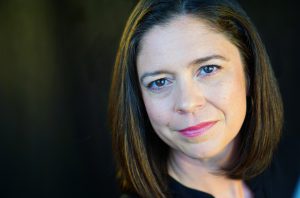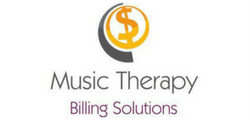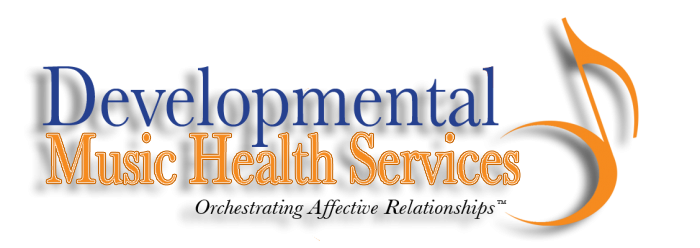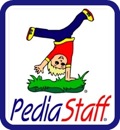I first met Julian O’Kelly at the Society for Music Perception and Cognition conference in Toronto last August. Julian is a man of many talents—music therapist, clinician, researcher, PhD student, speaker, and professional pianist. It was through circustance that we ended up co-presenting with our respective PhD mentors at the SMPC conference, but it turned into a relationship of mutual respect for each other’s work. It’s in that spirit that I’m excited to share this guest post by Julian, in which he shares his research on music therapy and assessments for individuals with a disorders of consciousness (DOC) diagnosis. It’s a long read…but well worth it!
About Disorders of Consciousness (DOC)
For the past three years, I’ve been conducting research at the Royal Hospital for Neuro-disability, exploring the effect of music therapy on rehabilitation and assessment of awareness for patients in vegetative and minimally conscious states, or ‘disorders of consciousness’ (DOC). In the care of those with DOC diagnosis, misdiagnosis and treatment are critically important issues for clinicians, family members and of course the individuals with DOC themselves.
Essentially the diagnosis of vegetative state implies that an individual has no consciousness, or awareness of themselves or their environment, despite an intact sleep/wake cycle, where they open their eyes for large parts of the day. In contrast, the minimally conscious diagnosis assumes limited consciousness, and the potential for rehabilitation from a range of professionals (including music therapists!).
Unfortunately, despite the huge implications for the patient and family of this contrasting diagnosis, up to 43% of patients are misdiagnosed according to several studies. This is perhaps understandable when you consider the low arousal levels, complex disabilities, and many medications DOC patients receive. Most importantly, it’s likely that their language comprehension may be severely impacted upon by their head injury, so assessment protocols relying on responses to verbal commands may be of limited use.
The Research Inspiration
My case load as a music therapist over the last 15 years has included both ‘unresponsive’ palliative patients in the final stages of dying, and those with DOC. In both cases I have witnessed individuals appearing to be more responsive to others and their environment when I performed their preferred music. A Google search using the terms ‘music’ ‘coma’ and ‘recovery’ produced 130,000 hits, with a wide range of news items reporting cases of individual ‘brought out ‘ of coma through listening to their favourite music. However, these stories rarely report any scientific explanation for such occurrences.
This has led me to question how and why music should be effective in engaging with these individuals where other stimuli appear less effective. Music therapists have made claims with regard to ‘reaching’ or ‘contacting’ those with DOC. However, existing studies are based on small numbers, and lack the sort of measures which distinguish methodical, rigorous studies such as control or comparison measures and randomisation. There are no studies to counter the argument that these ‘miraculous’ responses might simply be co-incidental, part of the patient’s natural recovery, or unrelated to the nature of the music presented to them. It is also hard to avoid the impression that music therapy is sometimes called upon here in a rather ad-hoc fashion, with a type of ‘last resort’ rationale.
So, for the last 3 years, thanks to a PhD Mobility Fellowship from Aalborg University, I’ve been trying to answer this question: can music therapy effect neurophysiological and behavioural changes suggesting arousal and awareness to contribute to the assessment of patients with DOC? To do this I’ve been supported greatly by my main supervisor Associate Professor Wendy Magee at Temple University, and a range of different experts who co-authored 3 papers with me (see below for details).
The Research and Results
In my second year of the PhD I got some encouraging news, purely from comparing standardised assessments by music therapists using a protocol known as the ‘MATADOC’ and an occupational therapy assessments using the ‘SMART’ protocol (see the useful references for more information). I found that the MATADOC was best at picking up signs of awareness from the visual and auditory domains, whilst the SMART was more sensitive to signs of awareness related to movement. In other words, the protocols complimented each other, and could give assessment teams a really comprehensive picture of each individual’s responsiveness. Some of the ‘music specific’ items in the MATADOC, such as ‘behavioural responses to music’ also provided unique information, which no other protocol or profession could provide. Great news for music therapy!
In the main focus of my PhD, I wanted to combine music therapy with EEG technology and cardio-respiratory monitoring, to see if brain responses in the EEG or changes in respiration / heart rate might provide us with subtle indications of awareness. Given those in vegetative states in particular are assessed as unable to speak or produce physical gestures, findings here could be highly interesting to those working in the field.
I presented 20 healthy, 12 vegetative state and 9 minimally conscious individuals with music therapy (live preferred music and improvised music entrained to respiration), pre-recorded disliked music, white noise and silence. The first exciting news was that preferred music produced the widest range of significant responses across healthy subjects, particularly for respiration rate and EEG power. This told me that as music therapy could excite brain and respiration responses, there was a good bet that it would have the kind of effects I wanted to see with the patients. So I was very pleased to find significant EEG power increases were found in frontal areas in both patient groups. These responses suggested some form of selective attention in favour of music therapy – particularly remarkable in the three apparently ‘vegetative state’ patients where this occurred! What’s more, the vegetative patients as a group tended to blink faster when presented with their preferred music. As the literature points to a relationship between blink rate and attention, arousal and dopamine (also important for arousal and brain connectivity), we have more good news for music therapy!
So in conclusion, the research has developed our understanding of the role of music therapy with DOC. Neurophysiological and behavioural evidence indicates that music therapy improves arousal, providing scientific support for its role in optimising the conditions needed for assessment of awareness. The striking effects of music therapy on brain activity also provide support for music therapy encouraging ‘neuroplasticity’ where intact brain regions compensate for damaged areas, developing new connections to speed up the rehabilitation process. This evidence has helped me secure finding for a further two years research to explore this possibility. So I hope to give you more good news in 2016!
Useful References and Links
You can follow me on twitter (@neuromuso), and I also oversee a web based forum for music therapists in neurology, and anyone else interested in this exciting field. Its free to join at: https://www.jiscmail.ac.uk/cgi-bin/webadmin?A0=MTNEUROLOGYNETWORK
The full details of my main study are in an open access paper, so completely free to download. It’s proving very popular, scoring higher than 97% of its peers in the Frontiers Journals group, with nearly 3,000 views in the first month! Check out the free pdf here. In APA style you can reference it as:
O’Kelly, J., James, L., Palaniappan, P., Taborin, J., Fachner J., & Magee, W.L., (2013). Neurophysiological and behavioural responses to music therapy in vegetative and minimally conscious states. Frontiers in Human Neuroscience. 7:884. doi: 10.3389/fnhum.2013.00884
The other two papers from my research are a literature review:
O’Kelly, J., & Magee, W.L. (2013). Music therapy with disorders of consciousness and neuroscience: the need for dialogue. Nordic Journal of Music Therapy. 22(2), 93-106. doi: 10.1080/08098131.2012.709269
…and the paper comparing music therapy and OT assessments:
O’Kelly, J., & Magee, W.L. (2013) The complementary role of music therapy in the detection of awareness in disorders of consciousness: an audit of concurrent SMART and MATADOC assessments. Neuropsychological Rehabilitation, 23(2), 287-298. doi:10.1080/09602011.2012.753395
The paper detailing the standardisation of the MATADOC is by Associate Professor Wendy Magee and colleagues:
Magee, W. L., Siegert, R. J., Daveson, B. A., Lenton-Smith, G., & Taylor, S. M. (2013). Music Therapy Assessment Tool for Awareness in Disorders of Consciousness (MATADOC): Standardisation of the principal subscale to assess awareness in patients with disorders of consciousness. Neuropsychological rehabilitation, (ahead-of-print), 1-24. doi:10.1080/09602011.2013.844174
If you are interested in the relationship between music therapy, neurocience, and neuroplasticity I also recommend these papers:
Särkämö, T., Tervaniemi, M., & Huotilainen, M. (2013a). Music perception and cognition: development, neural basis, and rehabilitative use of music. WIREs Cognitive Science, 4, 441-451.
Koelsch, S. (2009). A neuroscientific perspective on music therapy. Annals of the New York Academy of Sciences, 1169, 374-384.
LaGasse, A. Blythe, and Michael H. Thaut. “The Neurobiological Foundation of Neurologic Music Therapy.” Music and Medicine 5.4 (2013): 228-233.
Also, I will be presenting this research at both the World Congress of Music Therapy 2014 in Vienna, Austria in July 2014 and the Neuroscience and Music – V symposium in Dijon, France in late May 2014 that is focused on Cognitive Stimulation and Rehabilitation.
![Post image for [Guest Post] Emerging Research: Music Therapy and Disorders of Consciousness](http://www.musictherapymaven.com/wp-content/uploads/2014/02/Julian.jpg)


 orcid.org/0000-0001-8665-1493
orcid.org/0000-0001-8665-1493






{ 2 comments… read them below or add one }
One of the best articles I have seen regarding this very interesting subject.
The ‘MATADOC’ is a protocol provided by the music therapies. I shocked firstly to know that music is also a therapy. Completely change my thinkings this article. Good post keep posting.
You must log in to post a comment.